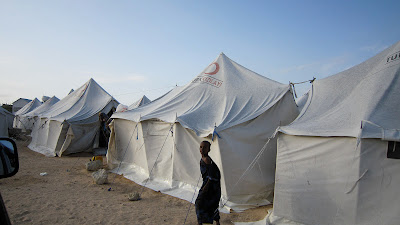This is a review of my book for The Journal of Modern African Studies by the Professor and Chair of Anthropology at the USA's Emory University, Dr Peter D. Little, who wrote the book Somalia: Economy Without State.
Getting Somalia Wrong? Faith, War, and Hope in a Shattered State by MARY HARPER London: Zed Books, in association with International African Institute, Royal African Society, and Social Science Research Council
Mary Harper has done a great service to students and the general public who really want to know what has gone so tragically wrong with Somalia. There now is a readable, well-argued book that one can refer to students and colleagues when peppered with the common question: ‘why is contemporary Somalia such a troubled nation?’ While seasoned experts of Somalia will not find much that is new in the book, they may applaud its accessibility and coverage of so many relevant and timely Somali issues in one single source.
As a seasoned British Broadcasting Company (BBC) journalist who has reported and written about Somalia since the collapse of the state in 1991, Harper nicely counters the plethora of myths about Somalia as a place of anarchy, chaos, and mass jihadists. The book provides enough detail about Somali history, politics, culture, and society, including the importance of clans, to grasp the complexity of Somalia’s current struggles without overly burdening the reader with excessive documentation and references. The author’s ultimate goal is to demonstrate that there were critical junctures in post-1991 Somalia where the international community, especially the US, had a chance to ‘get it right’ with Somalia but, instead, succumbed to poor intelligence and unwarranted fears about terrorism and radical Islam. These poorly-informed assumptions instigated a series of blundering but tragic diplomatic mistakes. For example, by not recognizing the significant opportunity in 2005-2006 to bring the moderate elements of the popular Union of Islamic Courts (UIC) into discussions of political and economic reconstruction in Somalia, the international community ‘got it very wrong’. In 2006 the US threw its support behind a loose collation of warlords called the Restoration of Peace and Counter-Terrorism and later that year provided the green light for a highly unpopular invasion of the country by Somalia’s regional nemesis, Ethiopia. As Harper rightly points out, the goal of these actions was to eliminate an al- Qaeda cell and the UIC, the latter whom were wrongly thought to be strongly connected with global jihadists and terrorism. Instead, the interventions radicalized a large segment of the UIC and fueled the growth of the radical Islamic youth movement, al-Shabaab, which by 2007 controlled most of southern Somalia and forced out most of the UIC’s moderate elements, including the current President of the Western-backed Transitional Federal Government (TFG) of Somalia—Sheikh Sharif Sheikh Ahmed. Harper correctly shows how this misplaced foreign voyeurism contributed to a self-fulfilling prophesy by turning Somalia into a haven for foreign jihadists and al-Qaeda-linked movements, such as al-Shabaab.
Getting Somalia Wrong covers a range of other topics, including Somali piracy, the role of the Somali Diaspora, the stability of the breakway state of Somaliland, the growth of informal financial institutions (hawala), the recent (2011) invasion by Kenya, and the 2011 famine that killed more than 50,000 people. Each of these issues is shown to have different and more nuanced explanations than what is commonly assumed; for example, contra popular accounts Somali piracy is not backed by well-funded, global criminal networks. Moreover, by looking at some of the economic and political successes of Somalia, Harper shows “how Somalis can ‘get it right’ by operating largely on their own initiative and doing things their own way (p. 195).” It is this finding of the book that gives some hope for Somalia’s future as long as it can avoid being an instrument in other country’s agendas.
PETER D. LITTLE
Emory University














































